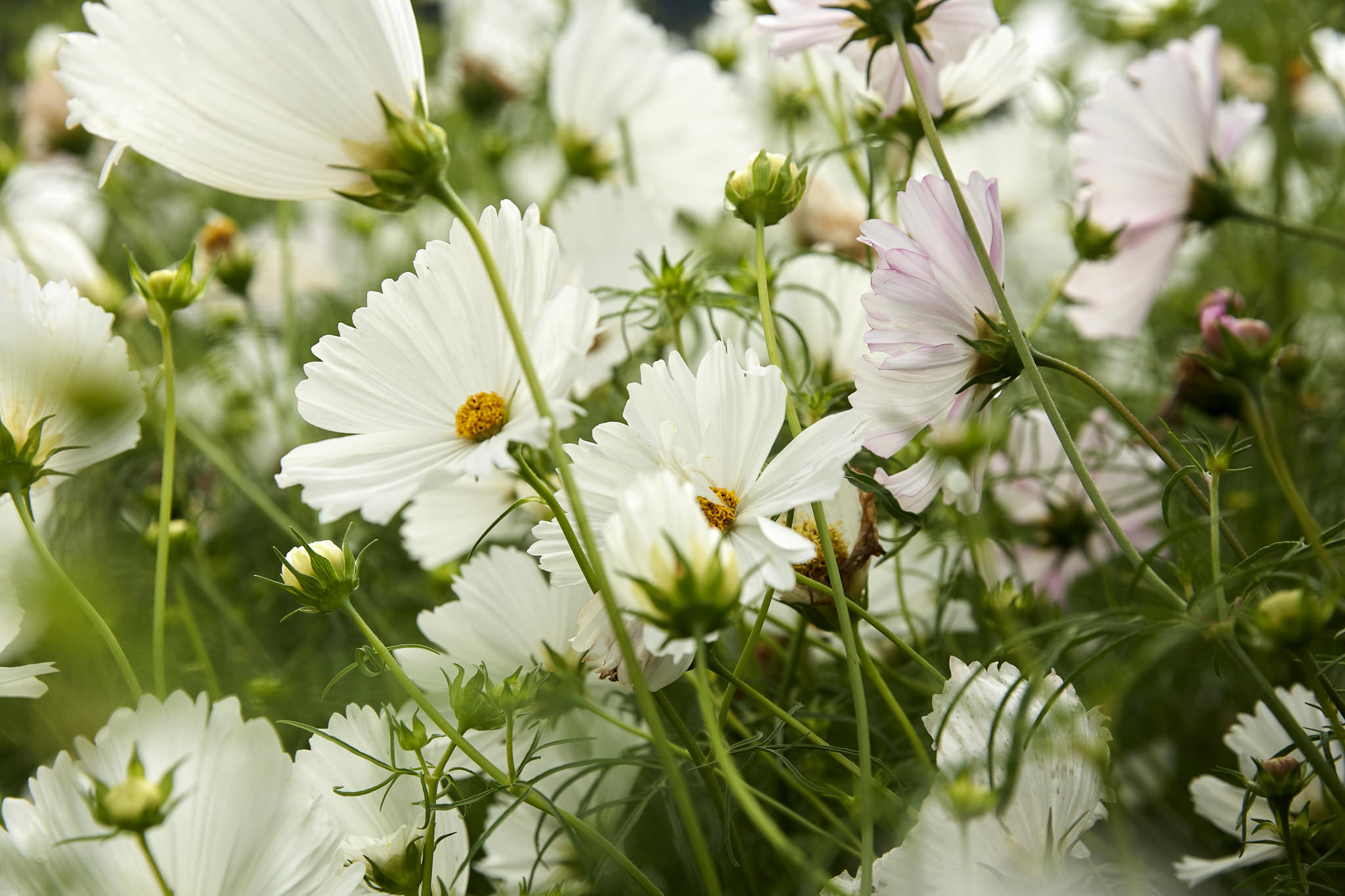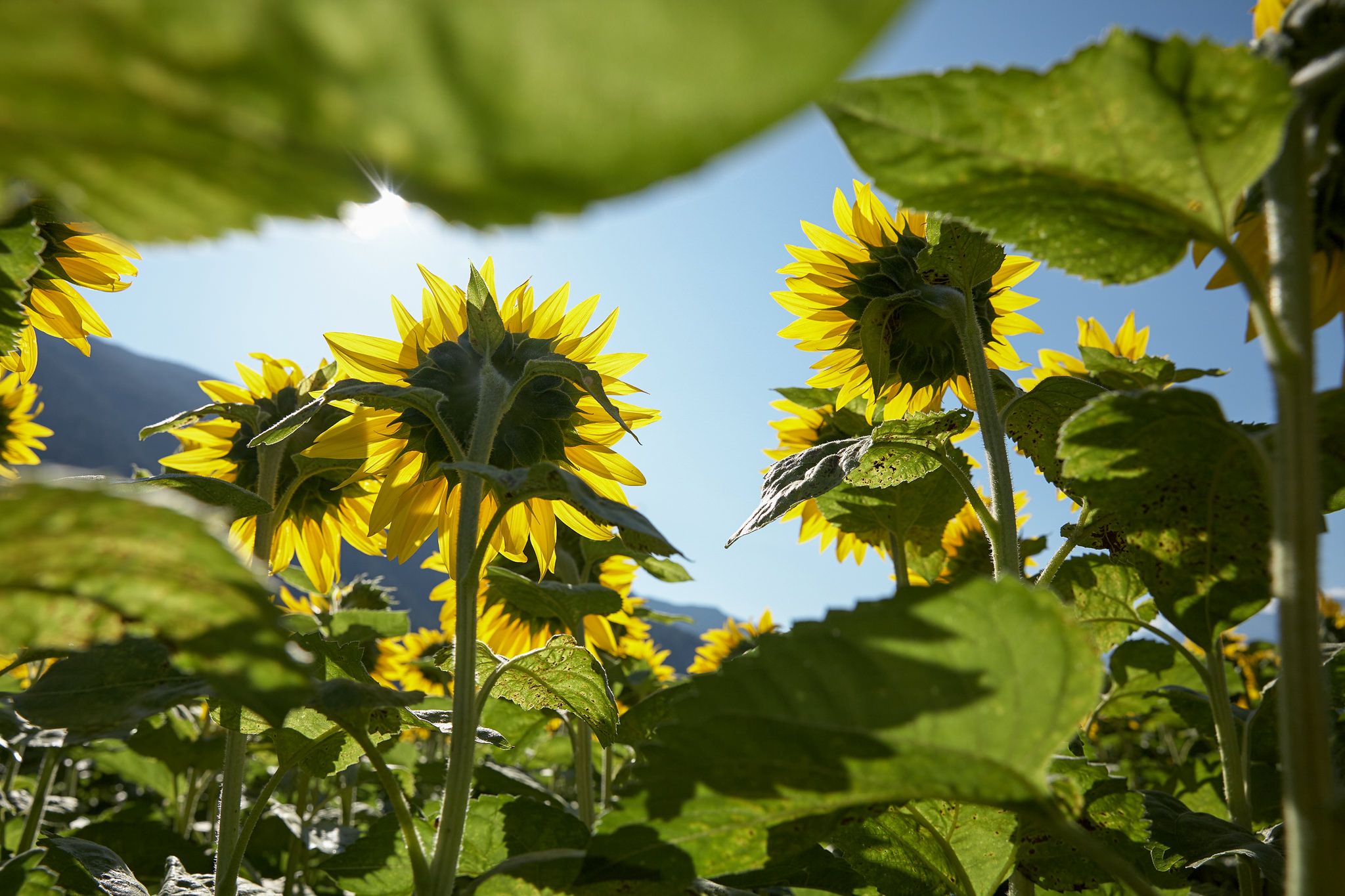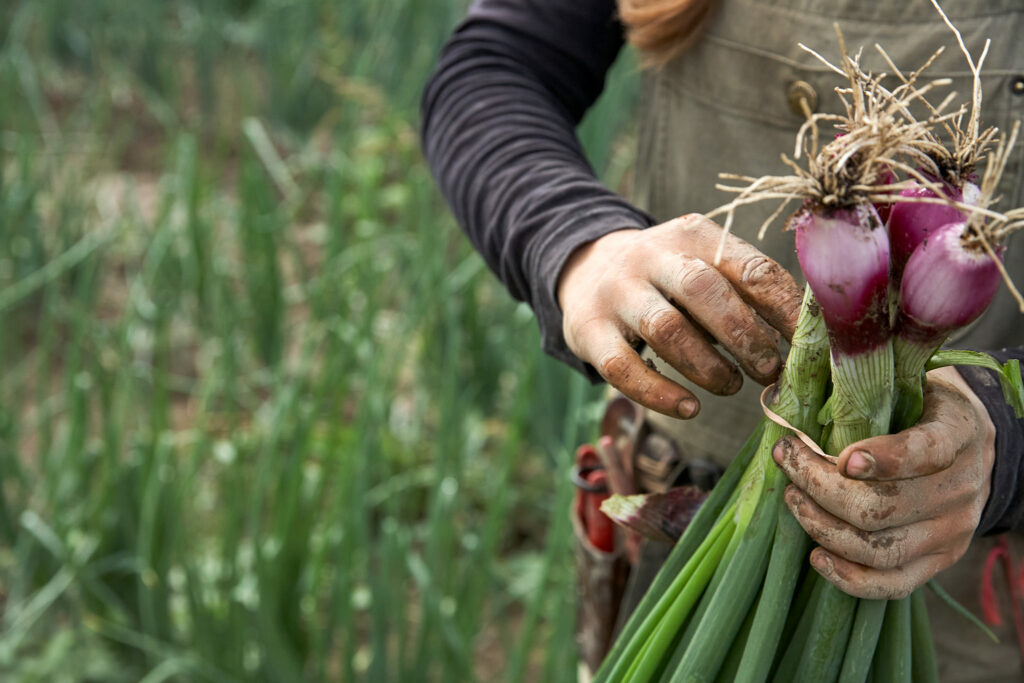At Laughing Crow Organics, the empty spring field is Kerry McCann’s blank canvas
Every year, the impossible goal to provision 600 households starts with the same blank canvas: bare earth, covered in snow, and a new crew of farmhands, keen, fresh-faced and committed to the beautiful vision of feeding people with organic food. Kerry McCann greets her annual quintet with a message. “I tell them to think of the farm as a painting. There’s a whole bunch of human effort that goes into it,” says McCann. “Care, concern and consideration. And it creates this thing of beauty.”
The recent arrivals are not afraid to get dirty or to work hard for a season, but after 10 years as the co-owner of Laughing Crow Organics, an organic mixed-vegetable farm located in the Pemberton Valley on the unceded territory of the Líl’wat Nation, McCann knows what lies ahead for them. She needs to give them something to get through heat waves, floods and fast-paced physical work. The thing that helped her: a way of looking at it all. “If you’d told me 10 years ago how hard it would be, I wouldn’t have done it,” says the now-39-year-old.
The idea of farming as art encourages her team to see themselves as co-creators, not just labourers. They will spend so many days ahead trying to outrun a tidal wave of work. McCann reframes the landscape into an image, describing a painting that comes slowly to life, one brush stroke at a time.

McCann’s medium is dirt. Her friend Brenda Bakker’s is makeup. As happens in small mountain communities, the pair occasionally trade services; Bakker takes care of McCann’s split ends and feeds her skin with moisture, and the farmer brings tomatoes and squash in return. They met when McCann first moved to Pemberton and worked in Bakker’s Christmas decorating business. While McCann laughs at the glamour disparity of their life paths, her theory of farming as creative expression hints at their connection.
Though Bakker has expressed her creativity for 20 years by mixing makeup palettes and styling models, brides and others, the idea of painting the farm into being, of hard work as an art practice, snagged the lifelong artist. It felt familiar, too. As a child she would sit in the sun-lit cab of her father’s truck, describing to him her inner world. He told her, “You see everything as if it’s a painting — an image frozen in a frame.”
Bakker saw her friend’s farm in its blank-canvas state and wanted to capture its transformation into a finished masterpiece.
Each week, Bakker drove 12 kilometres up the Pemberton Meadows valley to The Beer Farmers, a craft brewery from which Laughing Crow leases their farmland. The rutted, winding road follows glacial-fed rivers through giant fields, and the peaks of the Coast Mountains fill the sky. She went in all weather, no matter what else was on her plate that week. Sometimes alone, sometimes with her seven-year-old twins in tow, always with no fixed agenda but to walk the fields with her camera, pay attention and notice what came to life.

On her first visit, the trumpeter swans arrived, harbingers of spring. Bakker says she looked out at the empty field and thought, “This is all going to be a gorgeous painting at some point, but right now, this is work. This is nothing but work ahead.”
Laughing Crow Organics grows about 45 different vegetables and 30 varieties of flowers on 10 acres. Another 4.5 acres supports its agritourism offerings, including a summer sunflower maze and the Grand Majestic Pumpkin Patch. The farm sells its produce at three weekend markets in Squamish and Whistler and delivers more than 30,000 pounds of vegetables through community supported agriculture (CSA) veggie boxes. Laughing Crow’s organic vegetables fill 210 boxes each week. Committing to the CSA service up front buys the season-long subscriber-investors 17 weeks’ worth of fresh produce delivered direct to their door.
Farming in a mountain climate like the Pemberton Valley sets certain constraints. The season is short. McCann and the five other small organic mixed-vegetable farms in the area get about 190 days to coax forth their crops before frost kills everything. Over just six months, they start the vegetables, transplant them, protect them from weeds and pests, harvest them, wash them, pack them and get them to the customers.
For McCann, it all begins with a spreadsheet, thousands of seeds and the same kind of hope-amnesia cocktail that serves all life-giving endeavours, from childbirth to farming. There is nothing but work ahead. But, like Bakker, McCann is driven to create.

Running a small-acreage mixed-vegetable organic farm is incredibly hands-on. Witnessing all the tending on the farm enlivened Bakker. “The power of touch. It’s what you do with animals, babies, plants, to help them grow,” she observes. “But when you pick up a tomato at the market, you never think of that.”
After watering the baby tomatoes in the nursery, McCann brushes her hands gently over them, shooing the water off, helping strengthen their stems. She’s preparing them for the transition out of greenhouse, so they will be able to stand strong when the first wind comes along.
McCann practised as a craniosacral therapist, massage therapist and yoga teacher before she became a farmer. Bakker found another kind of healing at the farm. “It is a real joy to hear her talk about soil, about her love of seeds and planting and growth and of feeding the community,” Bakker says. The weekly visits to the farm became an earthy soul medicine. “It was my tether to get through stuff in my personal life. It became like art therapy for me.”
Despite the interruption to the workday, Bakker’s visits were supportive for McCann, too. Once the season begins, the to-do list never really ends. With a lean crew, everything is time blocked, every day listed out in a series of tasks, each with its own time budget. Despite how much McCann geeks out on the logistics, sometimes a job just takes longer than planned: weather, nature, broken water lines — all the variables conspiring to foil her schedule.
But Bakker’s visits brought a welcome disruption. “Just to have something slightly outside the list of the day’s objectives was a really great grounding tether for me,” McCann says. It helped her to see that it was not the end of the world if those flowers were not planted at the right spacing. “We’ll just replant them.” Though that meant pulling out every other plant and planting it again, she found it more palatable with another objective person there. McCann says that Bakker’s presence reminded her that “these are just plants, they just want to grow. Nothing terrible has happened here. Nothing is really going wrong. We’re just going to do a bit of work over again.”
Sometimes, in her day-to-day life on the farm, those kinds of things can be stressful. With her friend observing, she found a chance to shift her perspective, step back and see the farm through an artist’s lens.

Each Sunday, when she gets home from the Whistler Farmers’ Market, McCann walks around her fields. “Every week, something new will be coming to readiness — another crop of broccoli or a cauliflower or something that has been growing for 10 weeks and is finally ready to harvest.”
But for that tiny moment, she’s not checking off a to-do list, she says. “I’m creating it.” The walk gives her a chance to pause and ask herself what she sees, what she notices. “If there’s something particularly beautiful coming in, that will ground me and remind me that I am part of this beautiful creation, this effort to create something beautiful.”
She often starts in the greenhouse, one of her favourite places on the farm. “It’s like a kind of church,” says McCann. Throughout the farm, she finds the idyllic spots that feed her creativity. She seeks refuge in the flower patch, her time-out zone when everything is going full tilt, when the great growing experiment has hit its glorious peak and she’s chasing daylight to bring in armfuls of beets, cauliflower, cucumbers, carrots, radishes, kale and tomatoes. “If you’re having a moment of stress in your day, you go stand by some beautiful flowers and you can breathe.”
It doesn’t necessarily make business sense to add 30 more crops with a long growing season to the mix. She does it for joy. “I never would buy myself flowers,” she says, describing herself as the terrible girlfriend who would receive flowers with a litany of questions: “Where did these come from? Are they ethical? How much were the people paid? Why wouldn’t you buy me a plant?”
And yet, now that she grows flowers, she loves having a bouquet in the house, especially in her bathroom. “You’re in there a couple of times a day, so you can really appreciate them.”
Finding crew time to plant flowers is a victory against the clock, the to-do-list, the tidal wave of fecundity they’re in service of. Even if someone misspaces them and planting has to be done over again. It wasn’t until she saw Bakker’s photos that she could perceive just how well her vision had been realized: tiny uprooted seedlings and giant blocks of colour in bloom.

In the late fall, fog comes down over the valley. The frost has killed off anything green; only lumpy orange orbs of squash remain. McCann has a storage room full of squash to deliver and a season of rest and integration to transition into. Time to paint, make art with dried flowers and prepare soups she can sit down and eat, rather than slurp and run.
“It tips so fast from ripe to rotting. You have to really be there to catch the moment,” says McCann. She is grateful that Bakker was there to freeze time. After the slow growth from blank canvas to brilliant image, the speed of decline always surprises her, a reminder of how fundamentally plants demonstrate the finiteness of life. “The zeal of youth, the beauty of ripening and fullness, the beauty of their aging and being slightly past prime, on to decay,” McCann describes.
“But there’s beauty in decay, too,” adds Bakker. Her project documented all the ages and stages of a growing season on a small mixed-vegetable organic farm — one full cycle of life and death — but those first photos look different in hindsight. No longer empty. “I saw something composted, rotted, but with new life on it, coming out of that cold, cold earth,” she says.
“Perennially, in March, I am filled with hope,” says McCann. Things don’t always go the way she wants, or the way she plans, but it all begins with seeds of optimism. “Every year, we have this renewed hope. That the season will be kind to us. Things will grow again.”

